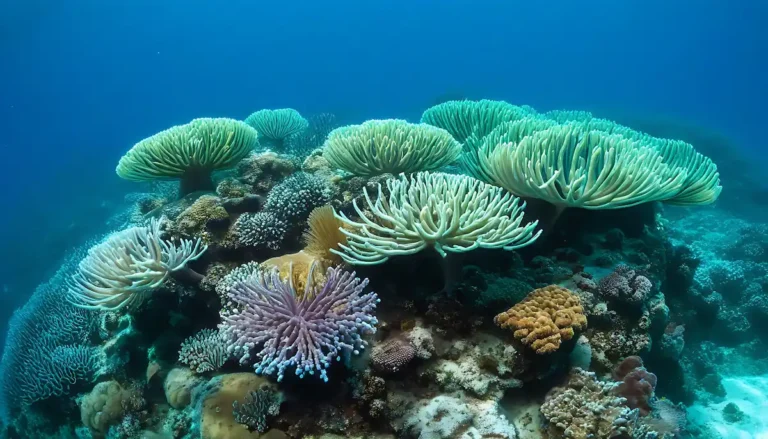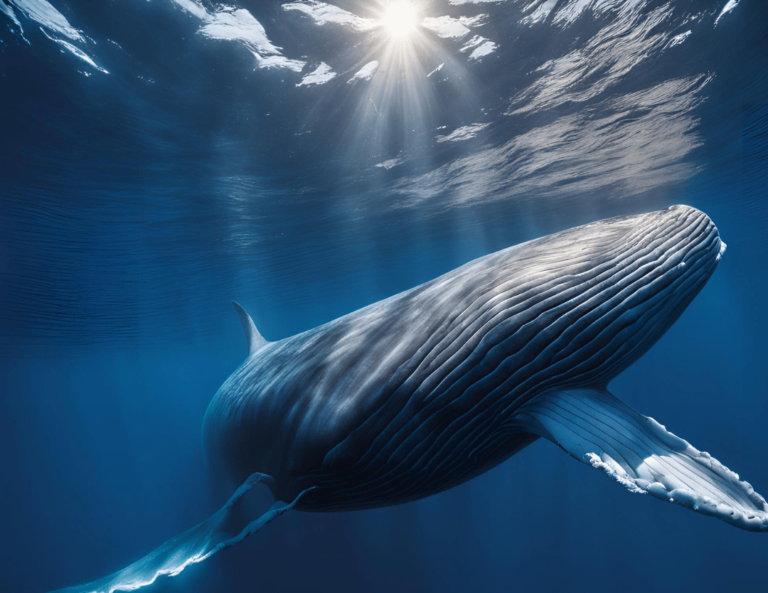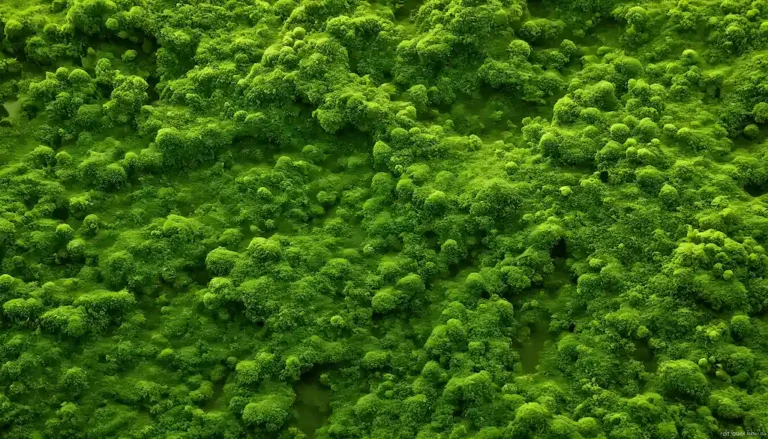Tuna The Mighty Fish of the Ocean
What is Tuna?
- Overview of tuna species
- Size, habitat, and distribution
Overview of Tuna
Tuna are fast-swimming, migratory fish found in oceans around the world. Belonging to the family Scombridae, they are known for their speed, strength, and unique ability to regulate their body temperature, a trait uncommon among most fish. Tuna play a significant role in both marine ecosystems and global commercial fisheries, prized for their meat in both fresh and canned forms.
Species of Tuna
There are several species of tuna, but the most well-known and commercially important include:
- Bluefin Tuna (Thunnus thynnus)
- Subspecies: Atlantic Bluefin, Pacific Bluefin, Southern Bluefin
- Description: Bluefin tuna are among the largest tuna species. They are recognized for their robust bodies and metallic blue color on the upper side.
- Size: Can grow up to 3 meters (10 feet) and weigh over 600 kg (1,300 lbs).
- Habitat and Distribution: Found in the Atlantic and Pacific Oceans. Atlantic Bluefin is highly migratory, moving between breeding and feeding grounds.
- Yellowfin Tuna (Thunnus albacares)
- Description: Smaller than the bluefin, yellowfin tuna have bright yellow sides and a long yellow dorsal fin.
- Size: Reaches up to 2 meters (6.5 feet) in length and weighs up to 180 kg (400 lbs).
- Habitat and Distribution: Found in tropical and subtropical waters of the Atlantic, Pacific, and Indian Oceans.
- Skipjack Tuna (Katsuwonus pelamis)
- Description: Smaller and more streamlined, skipjack tuna have dark horizontal stripes along their bellies.
- Size: Typically around 80 cm (2.6 feet) and weighing 8–10 kg (17–22 lbs).
- Habitat and Distribution: Inhabits warm waters of all the world’s oceans. It’s the most commonly canned tuna variety.
- Albacore Tuna (Thunnus alalunga)
- Description: Albacore is known for its long pectoral fins and is often referred to as “white tuna” due to the light color of its meat.
- Size: Grows up to 1.4 meters (4.6 feet) and can weigh up to 60 kg (130 lbs).
- Habitat and Distribution: Found in temperate and tropical waters of the Atlantic, Pacific, and Indian Oceans. Highly migratory.
- Bigeye Tuna (Thunnus obesus)
- Description: Named for its large eyes, this species has a deeper body compared to other tuna.
- Size: Reaches about 2.5 meters (8 feet) and weighs up to 200 kg (440 lbs).
- Habitat and Distribution: Inhabits deeper waters in tropical and temperate oceans.
Size and Characteristics
- Tuna species range from small, such as the skipjack, to massive bluefin tuna.
- Their bodies are streamlined, built for speed, and they can swim at speeds of up to 75 km/h (47 mph).
- Tuna are warm-blooded, which allows them to survive in colder waters than most fish.
Habitat and Distribution
Tuna are highly migratory and are found in all major oceans of the world. Their migration patterns often cover thousands of miles as they travel from feeding grounds to spawning areas. They thrive in a range of water temperatures, though different species prefer varying temperature ranges—from tropical to temperate zones.
Due to their global distribution and high demand, tuna stocks are carefully managed by international organizations to prevent overfishing, with specific quotas set for different species.
Types of Tuna: A Closer Look
- Unique characteristics of each type
- Different species of tuna (e.g., Bluefin, Yellowfin, Albacore)
Types of Tuna: A Closer Look
Tuna are divided into several species, each with unique traits, appearances, and behaviors. Below is a closer look at some of the most important and well-known tuna species.
1. Bluefin Tuna (Thunnus thynnus)
- Subspecies: Atlantic Bluefin, Pacific Bluefin, Southern Bluefin
- Size: One of the largest tuna species, capable of growing up to 3 meters (10 feet) and weighing over 600 kg (1,300 lbs).
- Habitat: Found in both the Atlantic and Pacific Oceans. Atlantic Bluefin migrates extensively between feeding grounds in the Atlantic and spawning grounds in the Mediterranean Sea.
- Unique Characteristics:
- Bluefin tuna have a metallic blue back and silver belly, built for both power and speed.
- These fish are warm-blooded, allowing them to inhabit colder waters than most other fish species.
- Highly prized in sushi and sashimi markets, especially in Japan, where top-quality specimens can sell for thousands of dollars at auctions.
- They can swim at speeds of up to 60 km/h (37 mph) and dive to great depths.
2. Yellowfin Tuna (Thunnus albacares)
- Size: Generally smaller than the Bluefin, reaching up to 2 meters (6.5 feet) in length and weighing around 180 kg (400 lbs).
- Habitat: Found in tropical and subtropical regions of the Atlantic, Pacific, and Indian Oceans.
- Unique Characteristics:
- Named for the bright yellow color of their dorsal and anal fins, along with a sleek, torpedo-shaped body.
- Yellowfin are known for their long, bright yellow second dorsal fin, often referred to as “sickle fins” due to their shape.
- Highly valued for their meat, which is often used for canned tuna but also sold fresh for grilling or in sushi.
- They tend to stay closer to the surface compared to other tuna species, though they can dive to depths of up to 250 meters.
3. Albacore Tuna (Thunnus alalunga)
- Size: Can grow up to 1.4 meters (4.6 feet) and weigh up to 60 kg (130 lbs).
- Habitat: Found in temperate and tropical waters of the Atlantic, Pacific, and Indian Oceans.
- Unique Characteristics:
- Albacore tuna are distinguished by their long pectoral fins, which extend to nearly half their body length.
- Often referred to as “white tuna” because of the light color of their flesh, which is milder in flavor compared to other tuna.
- This species is heavily fished for canned tuna, marketed as “white meat tuna.”
- They are highly migratory, traveling long distances across oceans.
4. Skipjack Tuna (Katsuwonus pelamis)
- Size: Smallest of the commonly consumed tuna species, typically growing to about 80 cm (2.6 feet) and weighing between 8–10 kg (17–22 lbs).
- Habitat: Found in warm waters across the world’s oceans, including the Atlantic, Pacific, and Indian Oceans.
- Unique Characteristics:
- Skipjack tuna have dark horizontal stripes running along their bellies, making them easily recognizable.
- This species forms large schools and is the most frequently caught tuna species worldwide, particularly for canned tuna.
- Skipjack meat is darker and stronger in flavor than albacore or yellowfin.
- They are fast-growing and reproduce rapidly, making them more resilient to overfishing compared to other species.
5. Bigeye Tuna (Thunnus obesus)
- Size: Can grow to about 2.5 meters (8 feet) and weigh up to 200 kg (440 lbs).
- Habitat: Found in deeper waters of tropical and temperate oceans, particularly in the Pacific and Atlantic.
- Unique Characteristics:
- Named for their notably large eyes, which are an adaptation for hunting in deep, dark waters.
- Bigeye tuna have a deeper body compared to other tuna species, and their flesh is rich in oil, making it ideal for sushi.
- They can dive to depths of 500 meters (1,640 feet), where they find cooler water to hunt.
- Bigeye are valued for their rich flavor and firm texture, making them a popular choice in both sushi and grilling.
Tuna in the Marine Ecosystem
- Tuna’s importance for marine biodiversity
- Role of tuna in the food chain
Tuna in the Marine Ecosystem
Tuna play a critical role in marine ecosystems, both as predators and prey. Their position in the food chain and their migratory behavior influence the balance of marine biodiversity across the oceans.
1. Role of Tuna in the Food Chain
Tuna are apex predators in the marine food web, meaning they occupy the top levels of the food chain. As such, they help regulate populations of smaller fish and marine organisms, which contributes to maintaining balance in ocean ecosystems.
- As Predators:
Tuna are fast, agile hunters, feeding on a variety of prey. Their diet mainly consists of:- Smaller fish like herring, sardines, mackerel, and anchovies
- Squid and cephalopods
- Crustaceans such as shrimp and krill By controlling the population of these species, tuna help prevent any one group from dominating the ecosystem, ensuring diversity and stability.
- As Prey:
Juvenile tuna are preyed upon by larger fish such as sharks, billfish, and marine mammals like dolphins. Though adult tuna have fewer natural predators due to their size and speed, they can still fall prey to larger sharks and orcas (killer whales). The balance between tuna as predators and prey helps maintain the dynamic equilibrium of ocean food webs.
2. Tuna’s Importance for Marine Biodiversity
Tuna contribute to marine biodiversity in various ways:
- Ecosystem Engineers:
By migrating vast distances, tuna help connect different marine habitats. Their movement between tropical, subtropical, and temperate regions can influence the distribution of nutrients as well as the structure of fish populations across oceans. Their feeding habits help redistribute energy throughout the food chain, from surface waters to deeper oceanic zones. - Promoting Genetic Diversity:
Tuna’s migratory patterns also ensure that different populations of marine species interact, promoting genetic diversity across regions. This is particularly important for the resilience of marine species in the face of environmental changes. - Supporting a Wide Range of Marine Life:
Tuna schools can serve as focal points for other marine species. Large predators like sharks and seabirds may follow tuna schools to feed on the smaller fish and other organisms that scatter in response to the tuna’s presence. In this way, tuna indirectly support the feeding strategies of many marine animals, maintaining the health and diversity of the ecosystem.
3. Impact of Tuna Overfishing on Marine Ecosystems
While tuna are crucial for marine biodiversity, overfishing of some species has raised concerns about the health of ocean ecosystems. The removal of large numbers of tuna from the food chain can disrupt the balance, potentially leading to:
- Increase in Prey Species Populations:
With fewer tuna to control populations of smaller fish and squid, some species may experience population booms, which can lead to overgrazing of plankton and other food sources. This can affect the entire food web and diminish biodiversity. - Imbalance in Predator Populations:
Predators that rely on tuna, such as sharks, orcas, and certain seabirds, may struggle to find sufficient food if tuna numbers decline. This can lead to population drops among these predators, further impacting the marine food chain. - Reduced Resilience of Ecosystems:
Tuna are part of a complex network of interactions in marine ecosystems. The loss of tuna, especially large apex predators like bluefin tuna, weakens the ecosystem’s resilience to environmental changes, such as climate change or habitat degradation.
How Do Tuna Migrate?
- Reasons for migration
- Long-distance migration patterns
How Do Tuna Migrate?
Tuna are highly migratory fish, capable of traveling vast distances across oceans. Their migratory patterns are among the most extensive of any marine species, covering thousands of miles each year. These movements are driven by a variety of factors, including food availability, breeding needs, and water temperature.
1. Long-Distance Migration Patterns
Different tuna species have distinct migration routes, but they all share the trait of long-distance travel across entire ocean basins. Their movements often follow predictable patterns between feeding and spawning grounds.
- Bluefin Tuna (Thunnus thynnus)
Bluefin tuna have some of the most remarkable migration patterns, with Atlantic and Pacific populations showing extensive seasonal migrations.- Atlantic Bluefin: This species migrates between the western and eastern Atlantic. In the spring, adult bluefin migrate to warmer waters in the Mediterranean Sea and the Gulf of Mexico to spawn. After spawning, they travel back to cooler waters in the North Atlantic, where food is more abundant.
- Pacific Bluefin: Pacific bluefin tuna migrate across the Pacific Ocean. They spawn in the western Pacific near Japan and migrate to the eastern Pacific, near California and Mexico, to feed, before eventually returning to their spawning grounds.
- Yellowfin Tuna (Thunnus albacares)
Yellowfin tuna migrate within tropical and subtropical waters of the Atlantic, Indian, and Pacific Oceans.- Unlike bluefin, they tend to remain in warmer surface waters but still migrate over long distances in search of food and suitable spawning areas.
- Some populations move closer to the equator to spawn, and then disperse to feeding grounds across broad stretches of ocean.
- Albacore Tuna (Thunnus alalunga)
Albacore tuna are known for long-distance, trans-oceanic migrations.- In the Pacific Ocean, albacore migrate from subtropical waters where they feed, to temperate zones in the North and South Pacific where they spawn.
- These migrations can cover distances of over 6,000 miles, with some populations moving between the central Pacific and coastal areas near the Americas or Australia.
- Bigeye Tuna (Thunnus obesus)
Bigeye tuna are deep-diving species that migrate between the surface and deeper layers of the ocean.- They are known to make vertical migrations, diving deep into cooler waters during the day and rising to the surface at night to feed.
- Horizontally, they also undertake long migrations across tropical and temperate oceans, similar to yellowfin tuna.
2. Reasons for Migration
Tuna migrate for several key reasons, related to survival, feeding, and reproduction. These factors often vary by species, but the primary drivers are similar across the different types of tuna.
- 1. Food Availability
Tuna follow the movements of their prey, which often leads them to migrate across vast areas of the ocean. Their primary diet consists of smaller fish (like herring, sardines, and anchovies), squid, and crustaceans, which are not evenly distributed across the oceans.- In colder seasons or when food is scarce in one region, tuna may migrate to new feeding grounds where prey is more abundant.
- Tuna also adjust their migration routes based on oceanic conditions such as currents and temperature changes, which affect the distribution of plankton and small fish.
- 2. Breeding and Spawning
Migration for spawning is a crucial aspect of tuna life cycles. Tuna often travel to specific, warmer waters where they can successfully reproduce.- Bluefin Tuna: Atlantic and Pacific bluefin tuna migrate to the warm waters of the Mediterranean Sea, Gulf of Mexico, and the western Pacific for spawning. These areas offer optimal conditions for their eggs to develop, including warm temperatures and relatively low predator presence.
- Yellowfin and Skipjack Tuna: These species spawn in tropical waters, but their migration patterns can vary depending on water temperature and food availability.
- 3. Water Temperature
Tuna are unique in their ability to regulate their body temperature, which allows them to survive in a wide range of water temperatures. However, they still prefer certain temperature ranges for different activities.- Bluefin Tuna: While they are capable of diving into colder waters to hunt, they prefer warmer waters for spawning.
- Yellowfin and Skipjack Tuna: These species are more commonly found in tropical waters but will migrate to slightly cooler waters in search of food.
- 4. Ocean Currents and Seasonal Changes
Ocean currents, such as the Gulf Stream in the Atlantic or the Kuroshio Current in the Pacific, influence tuna migration. Tuna use these currents to conserve energy while traveling long distances.- Seasonal changes in currents and water temperature can trigger tuna migrations, helping them move efficiently between feeding and spawning grounds.
Importance of Tuna Migration for Marine Ecosystems
Tuna migration not only supports their life cycles but also impacts the wider marine ecosystem. By migrating across oceans, tuna connect different ecological zones, distributing nutrients and interacting with various species. Their migrations also support human industries, particularly commercial fishing, which relies on tracking these migratory routes to sustainably manage tuna populations.
Why is Tuna Popular in Human Diets?
- Nutritional benefits of tuna
- Common ways tuna is prepared and eaten around the world
Why is Tuna Popular in Human Diets?
Tuna is a popular food choice worldwide due to its excellent nutritional profile, versatility in cooking, and its appeal in various culinary traditions. Here’s a closer look at why tuna is so favored:
1. Nutritional Benefits of Tuna
Tuna is rich in several nutrients that are beneficial for health, making it a popular choice for many people:
- High in Protein:
Tuna is an excellent source of high-quality protein, which is essential for building and repairing tissues, producing enzymes and hormones, and supporting overall growth. A typical serving of tuna provides around 20–25 grams of protein. - Rich in Omega-3 Fatty Acids:
Tuna is packed with omega-3 fatty acids, particularly EPA and DHA, which are known for their heart-health benefits. Omega-3s help reduce inflammation, lower blood pressure, and support brain health. - Vitamins and Minerals:
Tuna is a good source of several important vitamins and minerals:- Vitamin D: Supports bone health and immune function.
- Vitamin B12: Essential for red blood cell formation and nerve function.
- Selenium: Acts as an antioxidant and supports thyroid function.
- Niacin (Vitamin B3): Important for energy production and maintaining healthy skin and nerves.
- Low in Fat and Calories:
Tuna is relatively low in fat and calories compared to other protein sources, making it a good choice for those managing their weight. - Versatile and Sustainable:
Tuna can be consumed in a variety of forms, and many varieties are caught sustainably, making it an eco-friendly choice when sourced responsibly.
2. Common Ways Tuna is Prepared and Eaten Around the World
Tuna is enjoyed in numerous culinary traditions across the globe. Here are some common ways it is prepared and eaten:
- Sushi and Sashimi:
In Japanese cuisine, tuna is a key ingredient in sushi and sashimi. Fresh, raw tuna, often from species like bluefin or yellowfin, is served thinly sliced. Popular varieties include:- Maguro (Red Tuna): Often used in sushi rolls (maki) or served as sashimi.
- Toro (Fatty Tuna): The fatty belly part of the tuna, prized for its rich flavor and smooth texture.
- Canned Tuna:
Canned tuna is a staple in many households due to its convenience and long shelf life. It is typically available in two forms:- Chunk Light Tuna: Made from smaller species like skipjack or yellowfin, usually packed in oil or water.
- Solid White Tuna: Often albacore, known for its firm texture and mild flavor.
- Grilled or Seared Tuna:
Tuna steaks can be grilled, seared, or pan-fried. When prepared this way, they are often cooked to medium-rare or rare to retain their tenderness and flavor. Seasoned with herbs and spices or served with sauces, grilled tuna is a popular dish in many cuisines. - Tuna Poke:
Poke is a traditional Hawaiian dish made with raw tuna marinated in a mixture of soy sauce, sesame oil, and other seasonings. It is often served over rice with vegetables and garnishes. - Tuna Tartare:
Similar to poke, tuna tartare is a dish made from finely chopped raw tuna, typically mixed with ingredients like avocado, onions, and seasonings. It is often served as an appetizer in upscale restaurants. - Tuna Salad:
Tuna salad, made from canned tuna mixed with mayonnaise, celery, and other ingredients, is a classic and versatile dish. It can be served as a sandwich filling, in wraps, or on a bed of greens. - Tuna Pasta:
Tuna is commonly added to pasta dishes, such as tuna pasta bake or pasta with tuna and tomato sauce. The fish adds protein and flavor to the dish. - Tuna Steaks:
Often grilled or pan-seared, tuna steaks are a popular option for a hearty meal. They can be marinated or served with sauces and sides. - Tuna Ceviche:
In Latin American cuisines, tuna ceviche is made by marinating raw tuna in citrus juices, which “cooks” the fish through a chemical reaction. It is often served with vegetables and herbs.
Global Appeal
Tuna’s popularity is also attributed to its global availability and adaptability. Its mild flavor and firm texture make it suitable for a wide range of dishes and culinary styles, from Asian to Mediterranean and beyond. Additionally, its health benefits and ease of preparation contribute to its status as a favored protein source in many diets around the world.
The Tuna Fishing Industry
- Commercial fishing methods
- Challenges of overfishing and sustainable fishing practices
The Tuna Fishing Industry
The tuna fishing industry is a significant global enterprise, providing a major source of food and economic activity. However, it faces challenges related to overfishing and sustainability. Here’s a detailed look at commercial fishing methods, the issues of overfishing, and sustainable practices.
1. Commercial Fishing Methods
Several commercial fishing methods are used to catch tuna, each with its own impact on the environment and fish populations:
- Longline Fishing:
- Description: Longline fishing involves using a main line with numerous baited hooks attached at intervals. The line can stretch for miles and is often set in deep waters where tuna are known to swim.
- Impact: While effective, longline fishing can result in bycatch, including non-target species such as sharks, sea turtles, and seabirds. Bycatch can lead to ecological imbalances and harm to endangered species.
- Purse Seine Fishing:
- Description: This method uses a large net that encircles a school of tuna near the surface. The net’s bottom is drawn together to trap the fish.
- Impact: Purse seine fishing can be highly efficient, but it can also capture large numbers of juvenile tuna and non-target species. When set around fish aggregating devices (FADs), it can lead to high bycatch rates and disrupt marine ecosystems.
- Troll Fishing:
- Description: Troll fishing involves dragging baited hooks or lures behind a moving boat. It is typically used for catching smaller tuna species, such as albacore and skipjack.
- Impact: This method is considered more selective and less harmful compared to longline and purse seine fishing, but it can still result in some bycatch.
- Pole-and-Line Fishing:
- Description: This traditional method uses a pole and line to catch tuna individually, often by using live bait. It’s commonly used for species like skipjack and albacore.
- Impact: Pole-and-line fishing is generally considered more sustainable because it has minimal bycatch and is less disruptive to the marine environment.
- Handline Fishing:
- Description: Similar to pole-and-line fishing, handline fishing involves using a single line and hook to catch tuna. It is typically done from small boats.
- Impact: This method is highly selective and has very low bycatch, making it one of the most sustainable methods for catching tuna.
2. Challenges of Overfishing
Overfishing has significant implications for tuna populations and marine ecosystems:
- Population Declines:
Many tuna species, particularly the Bluefin, have experienced severe population declines due to high fishing pressures. Overfishing reduces the number of mature fish, disrupting the reproductive cycles and leading to long-term population declines. - Bycatch Issues:
Commercial fishing methods like longlining and purse seining often capture non-target species (bycatch) unintentionally. This can include sharks, sea turtles, and juvenile tuna, which can negatively impact marine biodiversity and ecosystem health. - Ecosystem Imbalance:
Removing large quantities of apex predators like tuna can disrupt the marine food web. Tuna play a key role in controlling the populations of smaller fish and maintaining balance within marine ecosystems. - Illegal, Unreported, and Unregulated (IUU) Fishing:
IUU fishing practices contribute to overfishing by circumventing regulations and quotas. This unregulated fishing can lead to unsustainable harvests and further threaten tuna populations.
3. Sustainable Fishing Practices
To address the challenges of overfishing and ensure the long-term health of tuna populations, various sustainable fishing practices and management strategies are being implemented:
- Quotas and Limits:
Setting catch limits and quotas based on scientific assessments helps regulate tuna fishing and prevent overexploitation. These quotas are established by international organizations such as the International Commission for the Conservation of Atlantic Tunas (ICCAT) and the Western and Central Pacific Fisheries Commission (WCPFC). - Marine Protected Areas (MPAs):
Establishing MPAs can help protect critical habitats and spawning grounds for tuna. These areas can serve as refuges from fishing pressure and support the recovery of tuna populations. - Fishing Gear Innovations:
Developing and adopting more selective fishing gear can reduce bycatch and minimize environmental impacts. For example, using circle hooks in longline fishing can reduce the mortality of non-target species. - Certification Programs:
Programs like the Marine Stewardship Council (MSC) certification provide consumers with information on sustainably caught tuna. Certified fisheries adhere to best practices and contribute to the preservation of tuna populations and marine ecosystems. - Monitoring and Enforcement:
Improving monitoring and enforcement of fishing regulations helps combat illegal fishing activities and ensures compliance with sustainable practices. This includes satellite tracking of fishing vessels and increased patrols in key fishing areas. - Consumer Awareness:
Educating consumers about the sustainability of tuna and encouraging the purchase of sustainably sourced products can drive demand for responsible fishing practices and support the health of tuna populations.
Tuna and Climate Change
- How climate change affects tuna populations
- Future of tuna in a changing ocean
Tuna and Climate Change
Climate change is having profound effects on marine ecosystems, including tuna populations. The impacts are complex and multifaceted, influencing tuna in various ways:
1. How Climate Change Affects Tuna Populations
- Temperature Changes:
Tuna are highly sensitive to water temperature, which influences their distribution, migration patterns, and overall health.- Habitat Shifts: As ocean temperatures rise, tuna may shift their distribution to cooler waters. This can lead to changes in the areas where tuna are found, potentially affecting their availability and the dynamics of local fisheries.
- Metabolism and Growth: Warmer waters can increase the metabolic rate of tuna, potentially leading to faster growth but also higher energy needs. This could affect their feeding patterns and reproductive success.
- Oxygen Levels:
Increased ocean temperatures can reduce oxygen levels in the water, leading to hypoxia (low oxygen conditions). Tuna, like many other fish, require sufficient oxygen to survive and thrive.- Habitat Compression: Lower oxygen levels may force tuna to migrate to different areas where oxygen levels are higher, potentially leading to increased competition and stress.
- Impact on Growth and Reproduction: Hypoxia can affect the health of tuna and their ability to grow and reproduce. Reduced oxygen can impair their metabolic processes and decrease their reproductive success.
- Ocean Acidification:
Ocean acidification, caused by increased CO2 levels, can impact marine life, including tuna.- Prey Impact: Acidification can affect the abundance and health of plankton and small fish, which are key food sources for tuna. Changes in prey availability can influence tuna growth and survival.
- Development and Health: Acidic conditions can affect the development of tuna larvae and juveniles, potentially leading to higher mortality rates and reduced recruitment to adult populations.
- Changes in Ocean Currents:
Climate change can alter ocean currents, which play a crucial role in nutrient distribution and the movement of marine species.- Impact on Migration Patterns: Changes in currents can disrupt tuna migration routes, affecting their ability to find suitable feeding and spawning grounds. This can lead to shifts in tuna populations and alter fishing dynamics.
- Extreme Weather Events:
Increased frequency and intensity of extreme weather events, such as hurricanes and typhoons, can impact tuna habitats and fisheries.- Habitat Damage: Extreme weather can damage coastal and oceanic habitats, affecting tuna populations and their prey.
- Fishing Disruptions: Extreme weather can disrupt fishing activities, affecting tuna catch rates and the availability of tuna products in markets.
2. Future of Tuna in a Changing Ocean
The future of tuna in a changing ocean is uncertain and will depend on how well both natural systems and human activities adapt to the evolving climate. Key factors to consider include:
- Adaptation and Resilience:
Tuna populations may adapt to changing conditions by shifting their distribution, altering their migration patterns, or changing their breeding and feeding behaviors. However, the ability of tuna to adapt will depend on the rate and extent of climate change, as well as the resilience of their ecosystems. - Impact on Fisheries:
Changes in tuna distribution and abundance can affect global fisheries, impacting the economies and communities that depend on tuna. Fishing industries may need to adjust their practices, including altering fishing locations and methods, to accommodate shifts in tuna populations. - Conservation and Management Efforts:
Effective conservation and management strategies will be crucial in mitigating the impacts of climate change on tuna populations. This includes:- Implementing Adaptive Management: Fisheries management will need to adapt to changing conditions by updating quotas, protecting critical habitats, and ensuring sustainable practices.
- Strengthening International Cooperation: Tuna migration spans international waters, requiring global cooperation to manage and protect tuna populations effectively.
- Investing in Research and Monitoring: Ongoing research and monitoring will be essential to understand how climate change affects tuna and to inform management decisions.
- Sustainable Practices:
Emphasizing sustainable fishing practices and reducing greenhouse gas emissions can help mitigate some of the impacts of climate change on tuna populations. Promoting responsible fishing, reducing pollution, and protecting marine habitats will support the long-term health of tuna and their ecosystems. - Consumer Choices:
Supporting sustainably sourced tuna and advocating for climate action can contribute to the overall health of marine ecosystems and help ensure the future viability of tuna populations.
Interesting Facts About Tuna
- Fascinating facts and trivia about tuna fish
Interesting Facts About Tuna
Tuna are remarkable fish with a range of fascinating attributes and behaviors. Here are some intriguing facts and trivia about tuna:
- Speed and Agility:
Tuna are among the fastest fish in the ocean. They can reach speeds of up to 75 km/h (about 47 mph) and are known for their powerful, streamlined bodies that allow them to travel long distances quickly. - Size Variability:
Tuna species vary significantly in size. The smallest, like the skipjack tuna, can weigh around 3 kg (6.6 lbs), while the largest, the Atlantic bluefin tuna, can grow to over 450 kg (990 lbs) and reach lengths of up to 3 meters (10 feet). - Warm-Blooded Fish:
Unlike most fish, tuna have the ability to regulate their body temperature. They can maintain a body temperature higher than the surrounding water, which enhances their muscle performance and allows them to hunt in colder waters. - Migratory Champions:
Tuna are known for their extensive migratory patterns. Some species, like the bluefin tuna, migrate across entire ocean basins, traveling thousands of miles between their spawning and feeding grounds. - Tuna’s Lifespan:
Tuna lifespans vary by species. For example, yellowfin tuna can live up to 7 years, while bluefin tuna can live up to 20 years or more in the wild. - Incredible Sense of Smell:
Tuna have an exceptional sense of smell, which helps them detect prey even in murky waters. They use this ability to locate schools of smaller fish and squid, which are key parts of their diet. - Unique Swimming Patterns:
Tuna are known for their distinctive swimming pattern, which involves continuous movement. They use a unique muscle structure that allows them to move their pectoral fins while swimming, helping them to stay streamlined and efficient in their movements. - Tuna’s Role in Marine Ecosystems:
Tuna play a critical role as apex predators in marine ecosystems. They help regulate the populations of smaller fish and maintain the balance of the ocean food web. - Coloration and Camouflage:
Tuna have a counter-shading coloration, with a darker blue or greenish back and a lighter underside. This coloration helps them blend into the ocean when viewed from above or below, providing camouflage from predators and prey. - Economic Value:
Tuna are highly valuable commercially, especially species like the bluefin tuna. The price of high-quality bluefin tuna can reach astronomical figures at sushi auctions in Japan, sometimes fetching hundreds of thousands of dollars for a single fish. - Tuna’s Migration Tracked by Technology:
Scientists use advanced tracking technologies, such as satellite tags, to study tuna migration patterns and behavior. These tags provide valuable data on their movements, feeding habits, and the effects of environmental changes on their populations. - Fastest Growing Fish:
Tuna are known for their rapid growth rates. Some species, like the yellowfin tuna, can grow from a few centimeters to over 1 meter (3 feet) in just a couple of years. - High Oxygen Consumption:
Tuna have a high rate of oxygen consumption compared to other fish. Their need for oxygen is met by their specialized gill structures and their ability to swim continuously, which helps increase water flow over their gills. - Cultural Significance:
Tuna have significant cultural and economic importance in many countries, especially in Japan, where they are a central part of traditional cuisine and are highly prized in sushi and sashimi dishes. - Unique Reproductive Behavior:
Tuna spawn in specific regions where conditions are favorable for the survival of their eggs and larvae. For example, Atlantic bluefin tuna spawn in the warm waters of the Mediterranean Sea and the Gulf of Mexico, while Pacific bluefin tuna spawn in the western Pacific.






